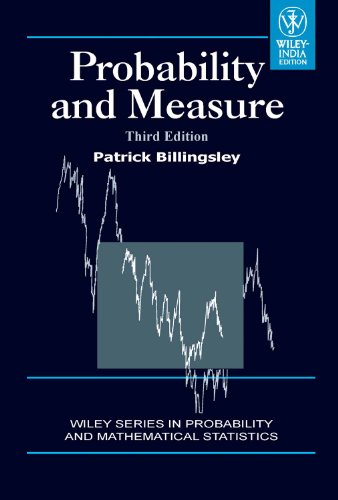=+This, the inner measure of A, is a second candidate for the measure of A.' A plausible
Question:
=+This, the inner measure of A, is a second candidate for the measure of A.' A plausible procedure is to assign measure to those A for which (3.1) and (3.2)
'An idea which seems reasonable at first is to define P. (4) as the supremum of the sums
" ,, P(A ) for disjoint sequences of $7-sets in A. This will not do. For example, in the case where O is the unit interval, So is ,, (Example 2.2), and P is A as defined by (2.12), the set N of normal numbers would have inner measure 0 because it contains no nonempty elements of
$%; in a satisfactory theory, N will have both inner and outer measure I.
Fantastic news! We've Found the answer you've been seeking!
Step by Step Answer:
Related Book For 

Probability And Measure Wiley Series In Probability And Mathematical Statistics
ISBN: 9788126517718
3rd Edition
Authors: Patrick Billingsley
Question Posted:






